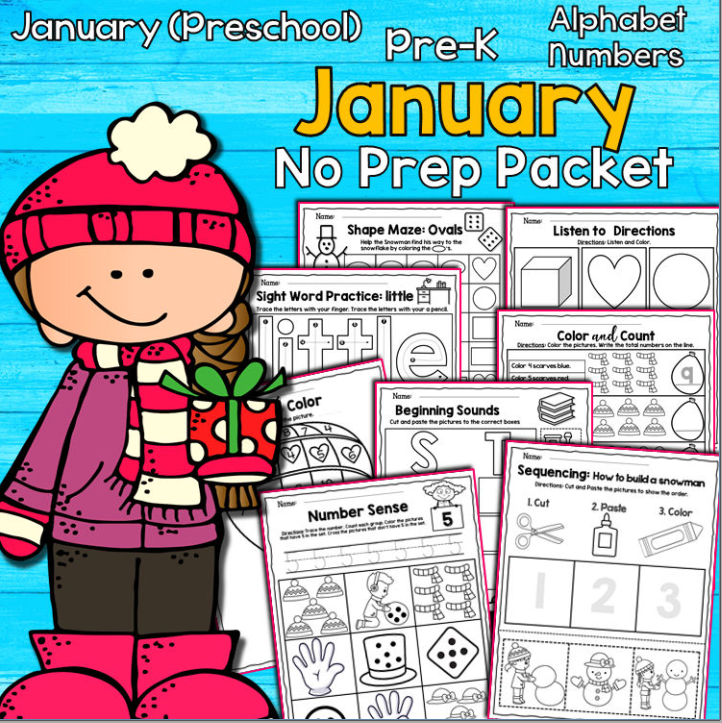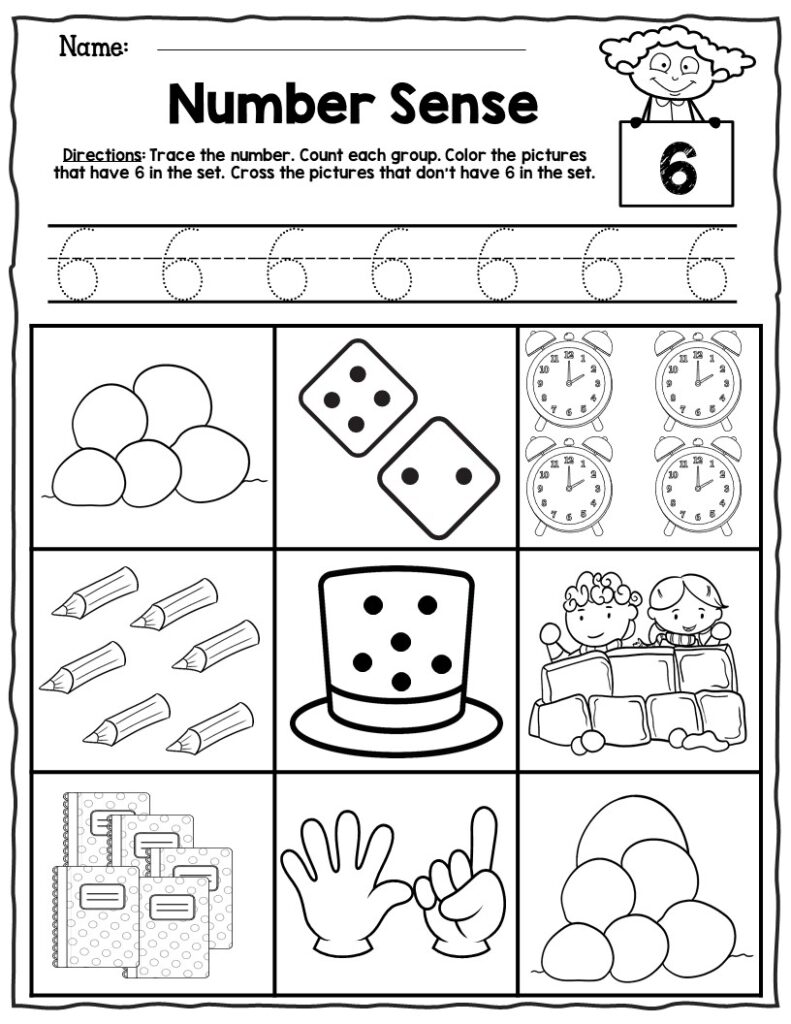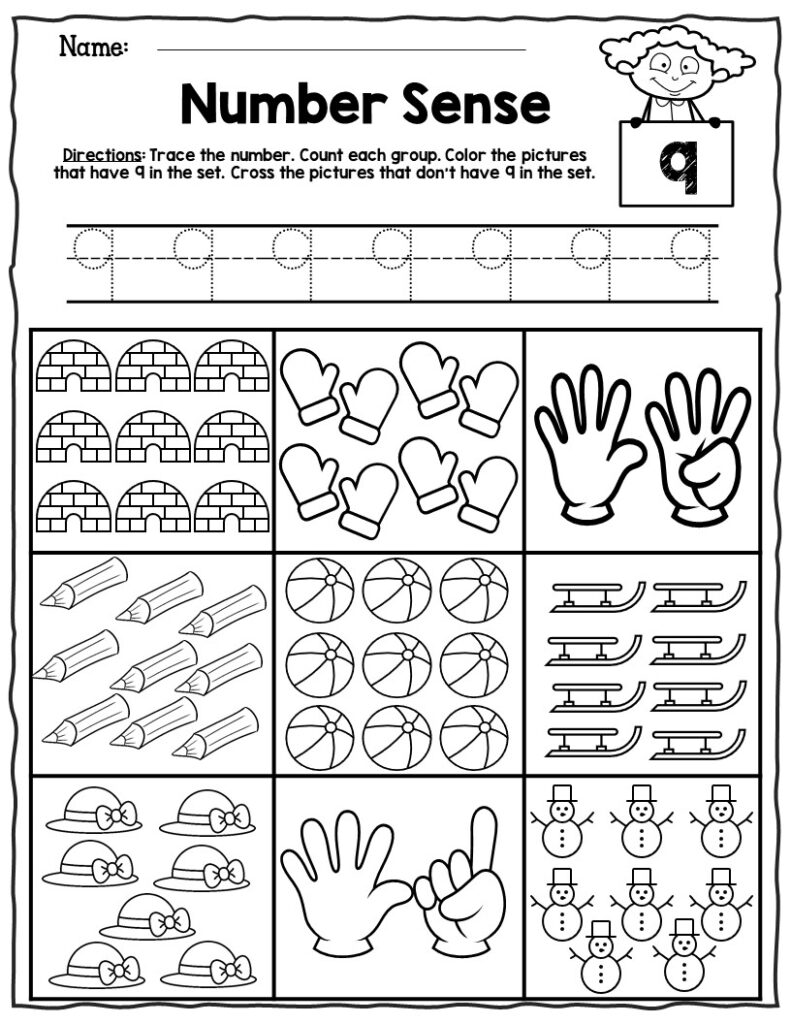
A fun way to help your students develop number recognition! These number practice printables are a fun way to help your little learners practice numbers. These number sense printables will help your prek, preschool, or kindergarten students with a fun and engaging way to practice building number sense while identifying, writing, and counting numbers from1-5. You will find other worksheets here on the website just look for them.
These number practice pages are perfect for a quick grab-n-go center, in morning tubs, number of the day, morning work, homework, math stations, or even an early finisher activity. Your students or kids will LOVE learning their numbers. You will love that these math worksheets are no-prep and easy to use.

We created this packet because many kindergarten students struggle with basic number sense including counting and cardinality, one-to-one correspondence, number identification, and number formation. This packet contains over 5 printables that are ready to go. They would be perfect for whole group or small group lessons, RTI, or morning work practice. Some of the skills practiced include number formation, one-to-one correspondence, number identification, writing numbers 0-20, teen numbers, ordering numbers, missing numbers, etc.
What is number sense?

As an educator, I’ve been posed this inquiry again and again by many guardians. To reply, I discuss its significance and why your kids need areas of strength for assembling sense, however many guardians feel really awkward with the point. It’s anything but a term they’re acquainted with or one utilized when they learned math. Straightforward, number sense is an individual’s capacity to comprehend, relate, and interface numbers.
Youngsters with solid number sense think deftly and smoothly about numbers. They can:
. Imagine and discuss numbers. Number bonds are one apparatus to assist them with seeing the associations between numbers.
. Dismantle numbers and set up them back in various ways — for example separating the number five a few times, (for example, 5+0=5; 4+1=5; 3+2=5; 2+3=5; 1+4=5; 0+5=5, etc), which assists your youngsters with realizing every one of the ways of making five.
. Process intellectually — taking care of issues in their minds as opposed to utilizing paper and pencil.
. Relate numbers to genuine issues by interfacing them to their regular world. For example, asking the number of apples that they’ve picked at a homestead. (“Andy picked 5 apples. Amanda picked 2. What number of apples did they pick altogether?”)

Number sense is so significant for your young numerical students since it advances certainty and empowers adaptable reasoning. It permits your youngsters to make a relationship with numbers and have the option to discuss math as a language. I tell my young understudies, that numbers are very much like letters. Each letter has a sound and when you set up them they make words. Indeed, every digit has a worth and when you set up those digits they make numbers!

Here are a few thoughts for advancing number sense in a first grader:
Assessing to bring math into your kid’s regular world. Gauge the number of steps it takes to get from the vehicle to the house or how long you need to stand by in line at the supermarket.
. Model numbers in various ways. Seeing numbers in various settings truly assists your youngsters with associating with numbers. For instance, checking out numbers in a deck of cards or distinguishing numbers on dice or dominoes without counting the specks.
. Picture ways of seeing numbers. Consistently, I request that my understudies imagine a number and let me know what they see. Your youngster will see numbers in various ways. Praise every one of the various ways and urge her to consider fresh. An eight can seem to be a snake or a 10 can be considered a baseball and bat.

. Contemplate math with a receptive outlook. Rather than asking what is 6+4, inquire, “What are far to make 10?” This takes into consideration more adaptable reasoning and fabricates certainty with knowing more than one response. Or on the other hand, you can likewise inquire “Could you at any point make eight with three distinct numbers?” or “What is 10 a greater number than 22?”
. Tackle issues intellectually. Rather than depending on retention, urge your youngster to utilize mental math (computing issues in his mind). In this way, on the off chance that you know 6+6=12, you know 6+7=13. He can utilize his twofold reality (6+6) to assist with tracking down a harder truth (6+7) and expand on ideas he definitely knows to ponder issues.
. Solid number sense helps assemble an establishment for numerical comprehension. Zeroing in on number sense in the more youthful grades helps construct the establishment important to process and tackle more mind-boggling issues in more established levels. Building an adoration for math in your kids starts with building comprehension of numbers.







